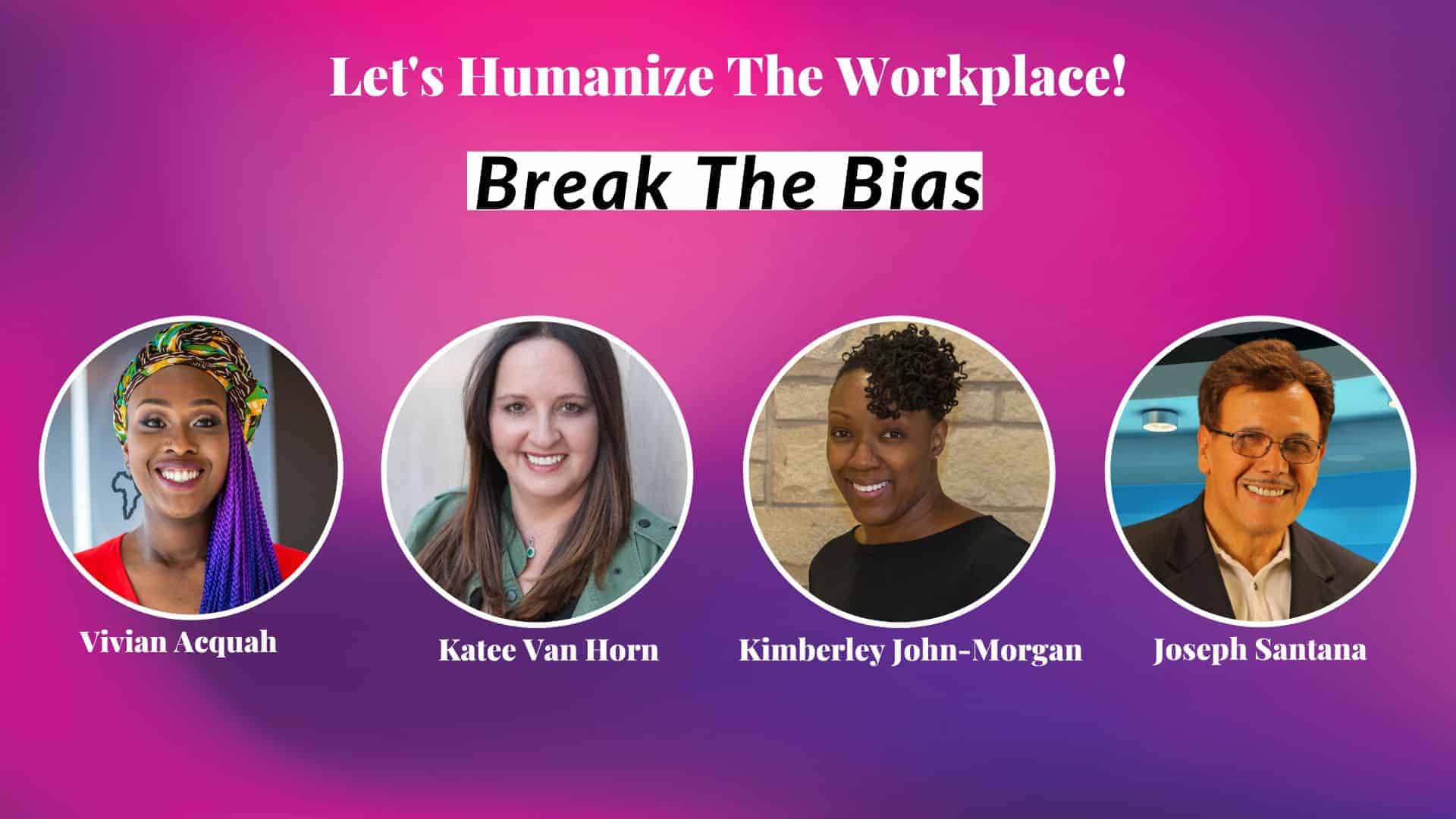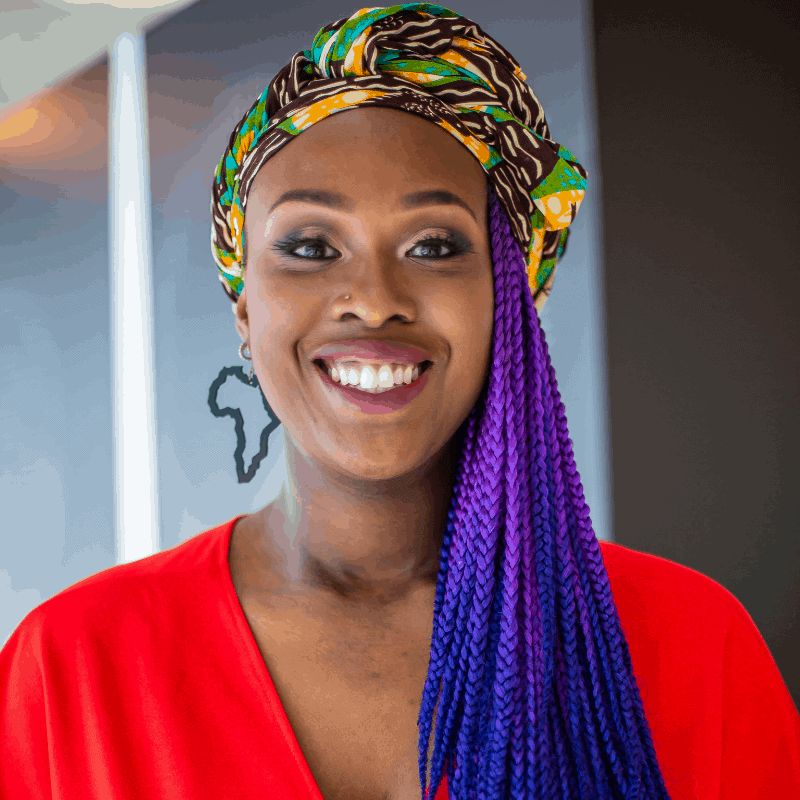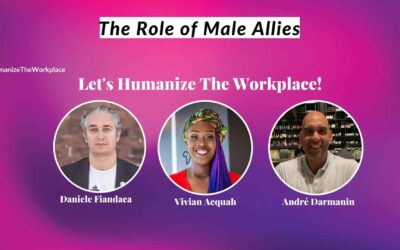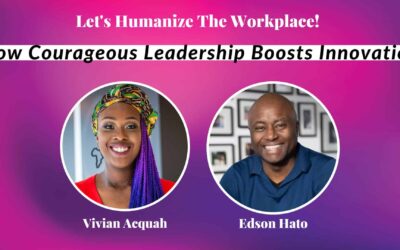Every year around March 8, our Instagram feeds start filling up with photos celebrating women. It’s International Women’s Day, and everyone wants to show that they care about women. And while the sentiment between posts and public displays of support for women, there is a much deeper level of conversation that needs to be had.
We can celebrate International Women’s Day, but we can’t ignore the roadblocks and setbacks that many women still face. We can post something on Instagram, but that doesn’t break down the biases against women in their professional and personal lives.
To discuss breaking biases on International Women’s Day, we invited some guests to speak on a recent episode of Let’s Humanize the Workplace.
- Katee Van Horn, HR Strategist;
- Kimberley John-Morgan, equity advocate;
- Joseph Santana, chairman of the CDO PowerCircle;
- host Vivian Acquah, workplace wellness advocate.
Together we discuss breaking biases, intersectionality, and our hopes for the future.
How to Break the Bias: Reflections on International Women’s Day

Humanizing a Broken Workplace
We talk about humanizing the workplace because, in many ways, the workplace is broken. We can look at this from several different angles. Our panelists brought up a few problems with the workplace as it is right now:
- The increasing digitization of the workplace makes it harder to connect on a human, personal level. AI, work-from-home, remote teams, and communication software may make things more efficient, but we move further away from valuable human interaction.
- COVID-19 has shown us that there are more important things than working. We have other important priorities and values in our lives—work needs to fit into our lives and leave space for work-life balance.
- Workplaces that don’t care about their employees cannot retain employees. It must be a two-way street of respect, value, and trust. People are realizing more and more that a company that doesn’t have your back is not for you! This fuels the Great Resignation of people leaving their workplace for “greener pastures” somewhere else.
In relation to women, one of the main ways the workplace is “broken” is that it wasn’t built for most women. The modern workplace or job is still stuck in a decades-old mindset that the husband goes to work and has a wife at home to take care of things. This is, obviously, just not how the world works anymore.
Policy Examples to Build a Better Workplace
For that reason, companies need to evaluate their policies, procedures, and expectations to ask if they are suited for all people to thrive under. Here are a few examples of policy areas that need attention to build a better workplace:
- Work from home policies—flexible work arrangements allow employees to attend to their personal lives, which in turn make them better and more committed employees.
- Childcare expenses as business expenses—why are expenses like meals and drinks considered legitimate business expenses, but childcare to attend a meeting is not?
- Bereavement or other personal leave policies—the expectation that you return to work immediately after a miscarriage or death of a loved one is inhumane.
- Gap years on resumes—women, or all parents, should not be penalized for taking time to have and raise children.
These are just some areas that companies need to evaluate. But it would be a mistake to think that they are small tweaks or patches. To truly create diverse workplaces and include women and others into the workplace, there needs to be a total overhaul of the workplace. Companies may need to consider completely new and innovative strategies instead of relying on quick fixes.
“When you look at the overwhelming changes that are happening, in some respects, we may lose some of that humanization unless we literally and intentionally put that humanization back in.” -Joseph Santana
Addressing the Gender Pay Gap
Alongside the policy areas already mentioned, another big one needs to be discussed: the gender pay gap. Katee Van Horn discussed just why this bias is one that needs to be broken. Women can get excited with a raise—until they realize their male counterparts make way more.
One of the biggest ways to impact the gender pay gap is through transparency surrounding salaries and wages. We need to remove the taboo on discussing money! The more women know and understand what others are being paid, the easier it is to advocate for change.
Another piece to this puzzle is around recruitment and hiring best practices. Vivian Acquah shared an anecdote where a recruiter was bragging about offering someone a salary based on what they asked for but lower than the market rate. The question here is, why? If we want to bring in the best talent and retain them, recruiters and hiring managers need to reorient themselves towards transparency and honest conversations about value instead of paying as little as they can get away with.
“As a recruiter, you’re working for the company. But isn’t it also your mission and your job, when somebody comes in, that you find ways to help make them stay?” -Vivian Acquah
Intersectionality and Inclusion
When discussing International Women’s Day and breaking biases, intersectionality is essential to the conversation. Unfortunately, many people are still not welcoming and accepting of transgender women and do not fight for their inclusion in women’s movements and conversations.
But intersectionality is core to DEI (diversity, equity, and inclusion) work. We can’t claim to be for one group and not the other—it’s not a “pick and choose” option.
A starting place for intersectionality is curiosity. Try to understand another person’s point of view or lived experience—with genuine curiosity—and it will be easier to include those intersecting ideologies into your own experience.
“Each one of us has a role in supporting the other, and each one of us has a role in making sure that everyone else is okay. To say to a woman, “you’re not a woman because you’re a transgender woman…” What happens in that person’s mind when they walk away from that conversation? -Katee Van Horn
Taking Action to Overcome Unconscious Biases
Unconscious bias training has been a hot topic of conversation in the corporate world. And while we need to start unpacking those unconscious biases, are we going far enough?
If it stops and recognizing you have an unconscious bias, there is no real action or change. We need to go a step further and start to consider how bias impacts everyday interactions with people. Each person needs to take individual responsibility for this, as no company or corporation will be able to do that work for you in a two-hour training session.
Here are some things that can help unpack unconscious biases and see how it impacts interactions:
- Remember, you never know who you are speaking with. You cannot know people’s identities fully until you tell them, so come from a place of humility when interacting with them.
- Consider people in your life who you love and who might have diverse or intersectional identities. How would you want people to treat them?
- Consider unconscious bias a muscle to train. You cannot unpack your entire life’s experiences right away and change overnight. It takes time to strengthen the muscle and understand your biases. Commit to working on it so that it grows and strengthens.
- Ask, “who’s missing?” Train your eye to notice who is and isn’t in the room. This helps challenge your beliefs and ideas about who should be there. You can also begin to advocate for diverse voices to be present.
Our panelists were also passionate about educating young people in this area. It is, of course, possible for adults to unlearn and relearn while unpacking their unconscious biases. However, it can be challenging to do! It’s hard to put in that work and undo years of looking at the world a certain way.
Children, however, can absorb information, learn, and grow in a positive direction much easier than adults. We need to instill diversity, equity, and inclusion values into the younger generations so that they will come up into the workplace and make a positive change.
“Diversity, equity, and inclusion starts in elementary school so that we don’t have these adults who go into these workplaces with these ideas that are hardened and baked into their core, and we’re trying to chisel them out.” -Kimberley John-Morgan
Conclusion
Let’s use International Women’s Day to do more than post photos on Instagram. Instead, let’s continue the conversation about humanizing the workplace, closing the gender pay gap, including all women with intersecting identities, and unpacking unconscious biases every single day.
We talk about all things diversity, equity, and inclusion (DEI) on Let’s Humanize the Workplace. Make sure to check out the Amplify DEI YouTube channel for more inspiring and important conversations. Also, take a look at the Amplify DEI conference to continue to expand your knowledge and amplify DEI in your workplace!







